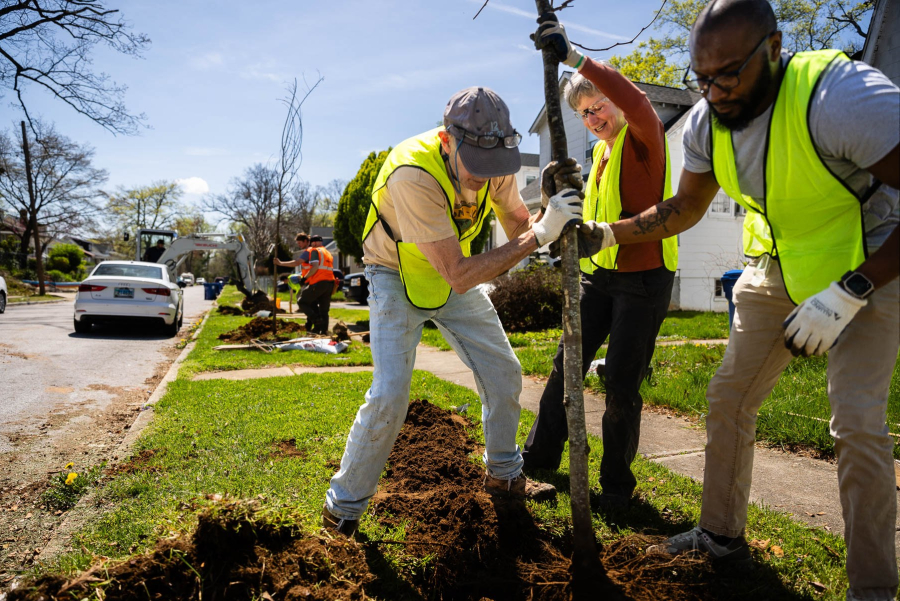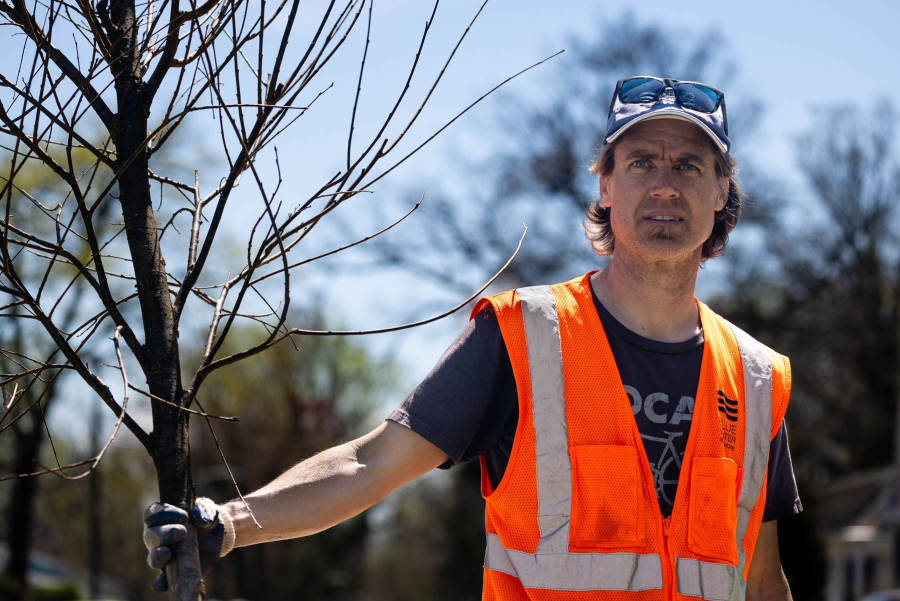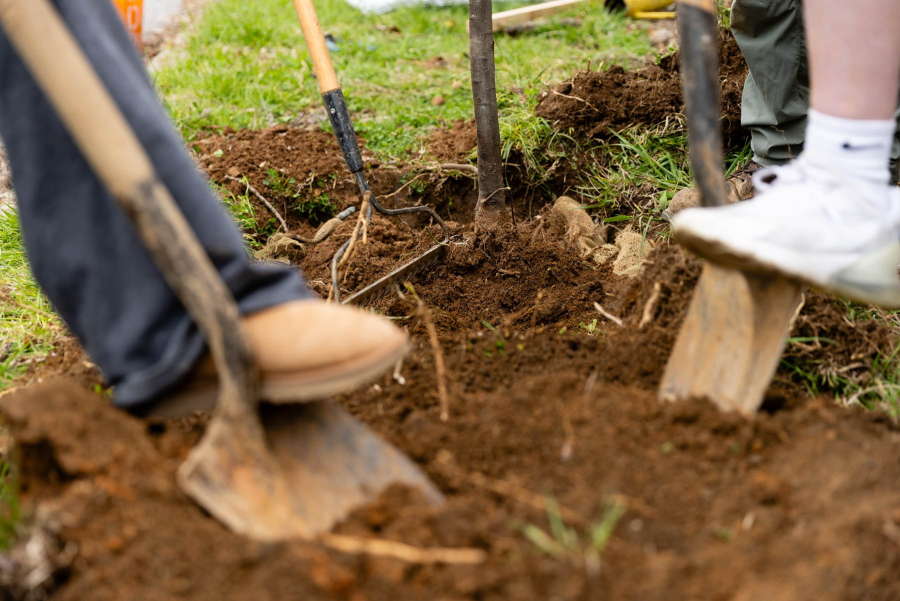Community tree planting takes place “Where the green is golden”
Howard Park in Baltimore receives 300 trees through Chesapeake Bay Trust grant

By the end of this spring, 300 new trees will have been planted outside homes in Howard Park, adding to the vibrancy of this unique Northwest Baltimore neighborhood.
With houses dating back to the 1940’s, this leafy suburb boasts an eclectic mix of three-story Victorians, Cape Cods, cottages and other stylish abodes. Forest Park Golf Course, which borders the neighborhood, has been prominent among Black golfers for decades, giving Howard Park its slogan, “Where the green is golden.” Just outside the community on Liberty Heights Avenue is the historic Ambassador Theater, which was built in the 1930’s and is now an arts center.
Over the past two years, the nonprofit Blue Water Baltimore has been planting and maintaining trees in Howard Park in an effort to improve the health of the Gwynns Fall watershed. When it rains, stormwater runoff carrying nutrients, sediment and chemical pollutants flows through Howard Park and enters storm drains, washing into the Gwynns Fall which flows into the Patapsco River and on to the Chesapeake Bay.
But trees can soak up that runoff, while also providing shade for residents and making the air cleaner.
Before getting to work, Blue Water Baltimore connected with the Howard Park Civic Association to gauge the community’s interest.
“We approached them to see if they wanted to plant trees with us, to beautify the neighborhood and improve water quality,” said Darin Crew, director of restoration at Blue Water Baltimore.
Members of the association were excited about the tree plantings, advising the nonprofit to focus on certain streets including ones near a vacant lot that they were in the process of revitalizing.
“They wanted us to plant around that area,” said Crew. “We identified different corridors that aligned with their community priorities and ours.”

So far, Blue Water Baltimore has planted 290 trees in Howard Park and will reach over 300 by the end of spring. Volunteers from both Howard Park and other Baltimore community groups have helped out along the way.
Helen Holden, who has helped plant trees in Howard Park this spring, says it’s “the people” that she enjoys the most when volunteering.
“You meet people from all walks of life, and we’re all out here because we want to make Baltimore better,” Holden said. “Even the neighbors come out and thank us.”
Another reason that managing stormwater runoff in Howard Park is important is because of the neighborhood’s public golf course.
An unnamed stream flows underground in a pipe that was buried under Howard Park a century ago. “That pipe can no longer carry all the water that comes to it,” said Nick Lindow, technical operations manager with Cityscape Engineering. “And so it comes out into the golf course.”
Cityscape Engineering is a civil engineering firm hired to resolve flooding issues at Forest Park Golf Course. In 2021, the company created a conceptual design that resulted in trees being planted at the golf course. A master plan is being finalized which will include ponds, step pools and forebays meant to reduce flooding and treat runoff draining from the 137 acres surrounding the golf course.
“In the city, this is kind of a unique opportunity to be able to treat that much urban runoff,” said Caroline Bibb, senior project engineer at Cityscape Engineering.
Funding for the tree plantings in Howard Park came from the Blue Water Baltimore itself, the National Fish and Wildlife Foundation’s Small Watershed Grant and the Chesapeake Bay Trust’s Urban Trees Award Program. The Chesapeake Bay Trust awarded Blue Water Baltimore almost $700,000 to plant 1,100 trees across five neighborhoods including Howard Park, resulting in over 800 homes getting new trees.

“The overall aim of the Urban Trees grant program is to green communities, enhance quality of life, human health and community livability,” said Lianna Gomori-Ruben, senior program officer with the Chesapeake Bay Trust
Included in the grant program is funding for maintenance for two years after planting so that the trees have a better chance of surviving.
“We know that young trees planted in urban settings are particularly vulnerable during their first few years,” said Gomori-Ruben. “These trees require regular watering, protections and mulching to establish themselves so that they survive and thrive long-term.”
According to Crew, the maintenance included in this grant program is “a game changer.” Street trees have an average lifespan of just 10 years. They have to deal with poor soil quality, droughts, summer heat and less rainwater being absorbed than in a typical forest.
While Howard Park has always been something of a tree-heavy neighborhood, there have historically been fewer trees planted in majority Black neighborhoods, which can lead to urban heat islands where temperatures are several degrees higher than other parts of the city.
“Due to redlining and other racist practices, there have been fewer street tree planting in neighborhoods with Black families compared to white neighborhoods,” said Crew. “We're trying to make up for that.”

Comments
How can I help?
Excellent article
Thank you!
Your comment has been received. Before it can be published, the comment will be reviewed by our team to ensure it adheres with our rules of engagement.
Back to recent stories